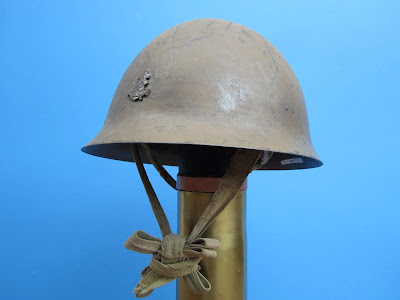As you are leaving Gettysburg on the Baltimore Pike, just as you pass Evergreen Cemetery, you will encounter on your left an imposing brick structure with the sign Battlefield Military Museum. Frequent visitors to Gettysburg may have driven past it many times without giving it a thought; next trip, however, its definitely worth stopping by for a visit.
In fairness to the collection please know that I was shooting through glass so most of these photos don't do justice to the objects in the cases
The Museum has three floors, two of which are open to the public. The lower (below ground) level is dedicated to collections spanning the World Wars, the focus of the first floor is the American Civil War and the post-Civil War era.
The museum is idiosyncratic and very much reflective of the collecting tastes of its owner and proprietor. With over ten thousand objects on display this museum truly is "one man's vision" and is obviously a labor of love that has taken many, many years to bring to fruition.
The galleries are shotgun-style with exhibit cases lining the walls. Museum conservators be warned; the galleries have much too much light for museum standards, but it certainly does make it easy for visitor to drink in the wealth of materials before them. As a matter of fact there is little about this museum that will meet with the approval of a museum conservator; visitors, on the other hand...
find themselves engrossed.
By the way the smell of mothballs is heavy in the air.
Looking like the dry-cleaners at Camp Pendleton.
The many painted helmets made me think of Chris Armold's worthy book - Painted Steel
Of the two Model 8 experimentals, the one on the left has an interesting camouflage design.
I wonder if its original? Also, note the paucity of labels, generally one needs to know what one is looking at, as so little identification is provided.
Who ever said "less is more"? *
There is just one remarkable piece after another in this altogether remarkable museum.
Mr and Mrs first-nighter heading out for the revival of Springtime for Hitler (oh do click the link).
"Chock-a-block" or "cheek by jowl"; you decide.
Picklehauben a-plenty, and swimming pool blue cases!
The more one looks the more one sees. There is so much stuff crammed into this building. One wonders what's on the top floor? (which isn't open to the public).
When you start calculating the value of the items in this collection you start to encounter a lot of zeros.
A lapse in the collection is the very under represented area of Japanese militaria, despite this fellow who's finger has been shot off.
The depth of the collection is just fantastic.
Despite its conservational shortcomings, not to mention the overwhelming aroma of mothballs,the Battlefield Military Museum is a gem and I'd highly recommend you put it on your itinerary for your
next visit to Gettysburg.
* Ludwig Mies van der Rohe





















































